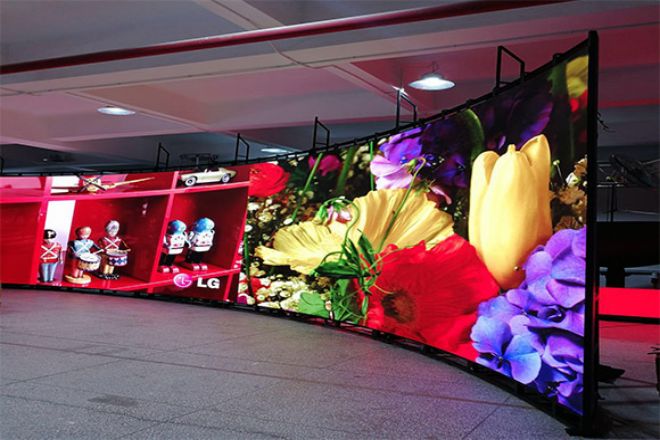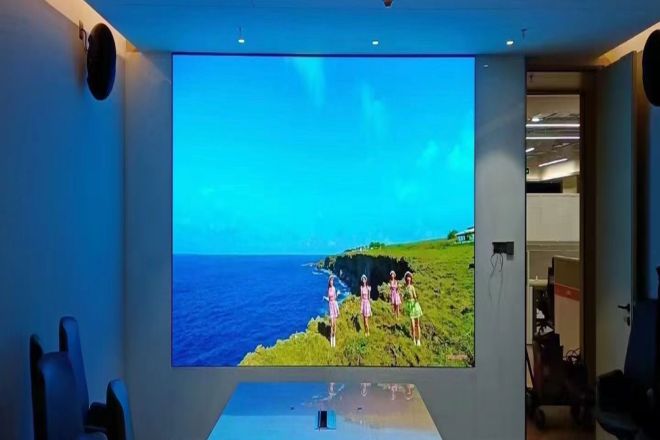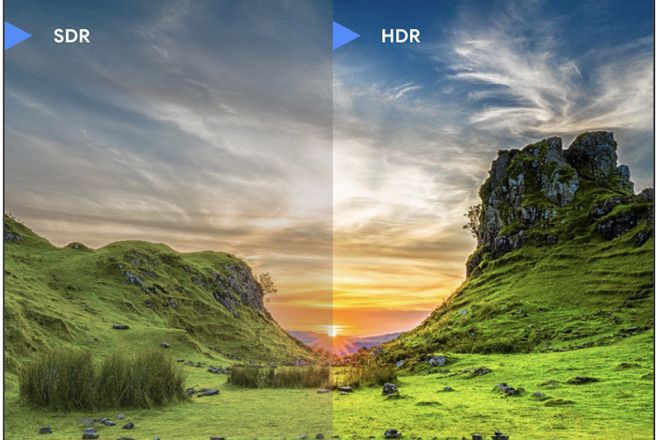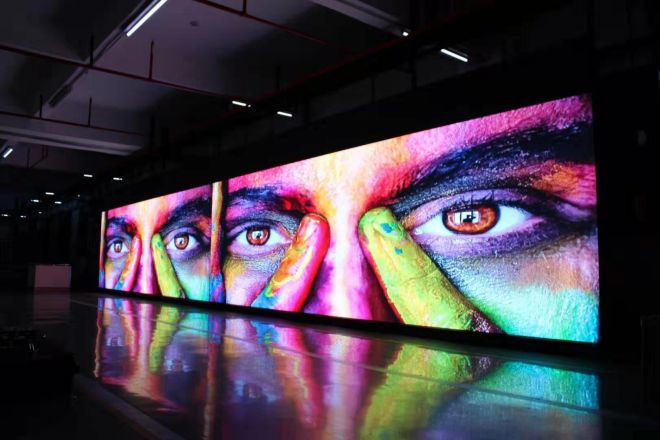مقدمة

ومع التطور السريع للتكنولوجيا، شاشات عرض LED have been widely used in various occasions due to their advantages such as high brightness, long life, and wide applicability. Whether it is large outdoor billboards, live sports events, commercial displays, or information releases in conference rooms, LED display screens have become indispensable display devices with their excellent display performance.
In this development process, the pursuit of display effects has never stopped. HDR (High Dynamic Range) technology, as one of the technologies that has attracted much attention in the display field in recent years, can provide a wider brightness range and higher contrast, bringing users a more realistic and natural visual experience. So, can LED display screens have HDR display effects?
1. Overview of LED display technology

LED display screen is a display device that uses light-emitting diodes (Light Emitting Diode) as display elements. LED display screens use this light-emitting characteristic to display various images and texts by controlling the current of light-emitting diodes at different pixel points.
1). Main types of LED display screens
There are many types of LED display screens, and the commonly used ones include:
Full-color LED display screen: It can display various colors and is mostly used in indoor and outdoor advertising occasions. It is currently a more commonly used type.
Monochrome LED display: usually only displays one color (such as red), mostly used to display text and other slogans, such as outdoor store signs, information display screens, etc.
Dual-color LED screen: generally red and green, also used for strip screen display, mostly used indoors.
Curved LED display: usually composed of flexible soft modules or realized by rotating splicing with conventional LED modules, mostly used in advertising occasions.
شاشة LED شفافة: including transparent grille screen and crystal film screen technology, can achieve a translucent display effect.
2). Features of LED display include color performance, brightness, contrast, etc.
Color performance: The LED display adopts an advanced color management system, which can accurately restore the color information in the original image or video, presenting a real and natural color effect.
Brightness: The brightness of LED display is generally expressed in luminous intensity (Luminous Intensity), the unit is the candela (cd). The brightness of LED displays for indoor and outdoor use is different to adapt to different lighting environments.
Contrast: Contrast is the brightness difference between the brightest and darkest parts of the display. The contrast of LED displays is affected by the brightness of LED lamp beads, color reproduction ability, and ambient light. High-contrast LED displays can better restore the colors of the real world and provide more vivid visual effects.
2. HDR display effect analysis
1). HDR definition and working principle
HDR, the full name of which is High Dynamic Range. HDR technology is an image processing technology that aims to improve the brightness range of an image so that the image can better show bright highlights and dark details.
Its working principle is based on the human eye’s perception of brightness; that is, the human eye can adapt to both strong and dark environments and discern rich details. However, due to the limitations of camera sensors and displays, conventional images cannot fully capture and display this wide brightness range.
HDR technology enables images to show a wider brightness range and richer details through image fusion and optimization of multiple exposures.
2). The role of HDR in improving image quality
HDR technology plays a significant role in improving image quality, which is mainly reflected in the following aspects:
Deeper black: HDR technology can provide a wider brightness range, allowing black areas to show deeper levels and details, avoiding the “crushing” phenomenon that may occur in black areas in traditional display technology.
Brighter white: HDR technology can show brighter white areas, making the highlights more realistic and natural, avoiding the “washed out” feeling that may appear in white areas in traditional display technology.
Richer colors: HDR technology can more accurately restore the color information in the image, making the picture color more vivid and rich and improving the overall visual effect of the image.
3). Current application status of HDR technology on different display devices
HDR technology has been widely used in various display devices, including TVs, projectors, monitors, etc.:
TV: HDR technology has become a standard feature of high-end TV products, providing users with a more realistic and delicate viewing experience. With the continuous development of technology, the performance of HDR TV products is also constantly improving, with the addition of higher resolution and wider color gamut.
Projector: HDR technology is also used in the field of projectors, making the projected picture clearer and brighter and suitable for projection needs on various occasions.
Display: HDR displays can provide a wider brightness range and richer colors, allowing professional users such as designers and photographers to view and edit images and video content more accurately. In addition, HDR displays are gradually being used in the fields of computers and game consoles for ordinary home users.
3. What is the difference between HRD and SDR?

HDR (High-Dynamic Range) and SDR (Standard Dynamic Range) differ significantly in several aspects:
- Conceptual definition:
HDR refers to high dynamic range images, which can capture, process, and reproduce content to increase the details of scene shadows and highlights.
SDR is a video standard that has been used since CRT monitors. It is a general standard for video and cinema displays, using traditional gamma curve signals to describe images or videos.
- Image detail performance:
HDR can obtain more picture details between light and dark. For example, when shooting a light bulb, the HDR picture can show the normal scene around the light bulb relative to the dark room, achieve higher tolerance, and show the intensity of light emitted by light bulbs of different brightness.
SDR obtains more picture details under the same picture.
- Brightness range:
HDR has a wider brightness range, allowing brightness above 1000 nits and brightness below 1 nit.
SDR can output 100 nits.
- Color gamut:
HDR uses a significantly larger color space than SDR. HDR usually uses P3 or even Rec.2020 color gamut, while SDR usually uses Rec.709.
- Color depth:
HDR can be 8-bit, 10-bit, and 12-bit color depth.
SDR is usually 8-bit color depth.
- سيناريوهات التطبيق:
The picture quality improvement brought by HDR technology is intuitive and has been widely introduced into movies, videos, and even games.
SDR is still the default format used in TVs, monitors, and projectors, and the vast majority of video content, whether it is games, movies, or online videos, still uses SDR.
- Technical details:
HDR uses dynamic metadata to change the information sent to the TV based on each scene so that the TV can correctly display the content at its correct brightness level.
It should be noted that although HDR has technical advantages, not all TV products can fully demonstrate the advantages of HDR technology. In order to obtain good HDR image quality, the TV needs to have characteristics such as high contrast and wide color gamut.
Finally, it should be emphasized that the difference between HDR and SDR is not limited to the above points, but may also involve other technical details and parameters. When choosing to use HDR or SDR, it is necessary to make comprehensive considerations based on specific application scenarios and needs.
4. Development trend of HDR technology for LED display

1). The impact of technological progress on the HDR effect of LED display
With the continuous advancement of technology, the HDR effect of LED displays is also continuously improving. The high brightness and high contrast characteristics of LED display screens combined with HDR technology have significantly improved the contrast, color richness, and detail presentation of the display screen.
In addition, the application of new driver ICs, more precise grayscale control, and color management technology also provide strong support for the improvement of HDR effects on LED display screens.
2). Future development direction of HDR technology for LED display screens
- دقة أعلى:
With the continuous development of technology, the pixel density of LED display screens will be further increased, and the resolution will be higher and higher. This will enable LED display screens to present more delicate and clear pictures when displaying HDR content.
- Wider color gamut:
In the future, LED display screens will adopt more advanced color management technology and a wider color gamut range to better support HDR content. This will enable the display screen to reach a higher level of color richness and color accuracy.
- Smarter display technology:
In the future, LED display screens will integrate more intelligent functions, such as intelligent color correction, intelligent brightness adjustment, etc. These functions will enable LED display screens to automatically adjust the display effect according to different scenes and content when displaying HDR content, thereby providing a more realistic and natural visual experience.
- Flexible display:
Flexible LED displays can be bent freely as needed, which will make the application of LED displays in special places and irregular venues more flexible and convenient. At the same time, flexible display technology will also provide more possibilities for the HDR effect of LED displays.
- Low energy consumption and strong interactivity:
Future LED displays will pay more attention to energy saving and interactivity. By adopting advanced energy-saving technology and enhancing interactive functions such as touch screen and gesture recognition, LED displays will be able to reduce energy consumption and improve user experience while ensuring display effect.
3). Application prospects of HDR technology of LED display in various industries
HDR technology of LED displays will be widely used in many industries. In the advertising industry, HDR technology will make advertising images more vivid and realistic, attracting more attention.
In entertainment venues such as cinemas and theaters, HDR technology will provide a more realistic and shocking viewing experience; in large-scale event venues such as stadiums and conference centers, HDR technology will make live broadcasts and rebroadcasts clearer and smoother.
In transportation, medical care, security, and other fields, HDR technology will also play an important role in improving the effect and efficiency of monitoring and display. In short, the HDR LED display technology will give people a more advanced and rich visual experience and play an important role in many industries.
خاتمة
After an in-depth discussion of LED display and HDR technology, we can conclude that LED display can indeed have HDR display effects. By adopting advanced display technology and optimization algorithms, LED display can achieve the wide brightness range and high contrast required by HDR technology, bringing users a more realistic and natural visual experience.
Finally, if you want to know more about LED displays, يرجى الحصول على اتصال معنا.
